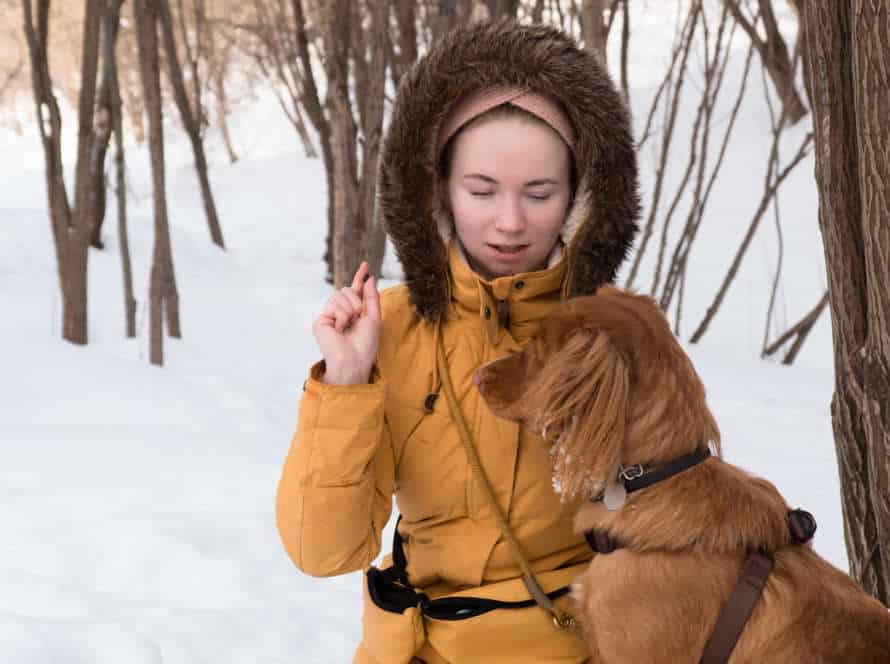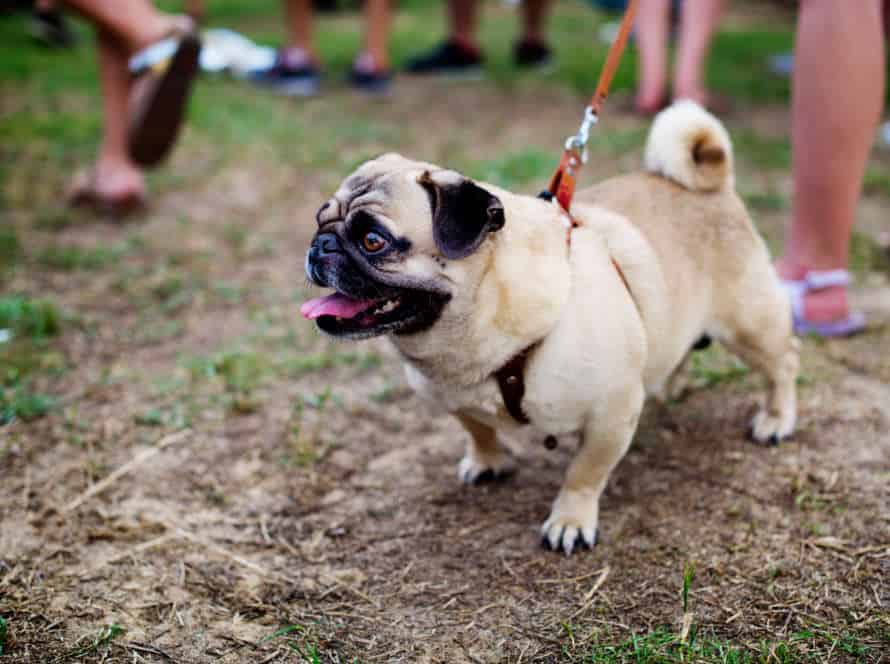Loose Leash Walking vs. Heeling: Which is Right for Your Dog?
Two great leash-training techniques: loose leash walking and heeling.
Which one to choose? Depends on your pup’s individual needs and preferences.
Loose leash walking: Your dog walks with some freedom beside you on a loose leash, able to sniff and explore. Great for dogs who like distractions.
Heeling: Dog walks at your pace, head up and leash taut. Perfect for pups who require more structure and guidance.
Successful leash training needs consistency and positive reinforcement. Give your pup plenty of time to learn and adjust. Be patient!
Understanding the Difference Between Loose Leash Walking and Heeling
Learning leash walking with your pup? Unsure if loose leash walking or heeling is best? Each has advantages and disadvantages. It depends on your choice and your pet’s behavior. Let’s compare the two to help you decide which is best for you and your pup.
Definition of Loose Leash Walking
Loose leash walking is a dog training technique that involves teaching your pup to walk alongside you. They have the freedom to sniff and explore within the leash’s length. Heeling is more structured and the dog should walk directly beside you, with minimal slack in the leash.
Which one to choose depends on your goals, lifestyle, and the dog’s temperament. Loose leash allows more exploration. Heeling requires precise obedience. Positive reinforcement such as treats and praise is recommended for training.
Definition of Heeling
Heeling is a dog training technique used to teach a dog to walk right by a handler with the shoulder in line with the handler’s leg.
Loose leash walking lets the pup to explore and have some leash freedom.
Which technique you choose depends on your preferences and pup’s behavior and training needs. Heeling for control. Loose leash walking for freedom to explore.
Patience, consistency, positive reinforcement for both to work.
Pros and Cons of Each Training Method
Two popular dog training techniques are loose leash walking and heeling. Their pros and cons depend on your goals and your dog’s traits.
Loose leash lets your pup sniff as they walk, without pulling or rushing ahead. This can make walks more fun! But it can be hard to learn.
Heeling is more formal and structured. Your dog walks beside you. It’s great for advanced training and events. But dogs with high energy may find it tiring.
Which technique will work best? That depends on your needs and your dog’s personality. Experiment with both.
Pro tip: Use positive reinforcement and patience when training your pup. No matter the method!
How to Teach Loose Leash Walking
Loose leash walking is a must-have skill for dog owners! Teaching it takes patience, consistency and knowledge. Here are tips and techniques to teach your pup. We’ll also compare it to the traditional heeling approach to help you choose what’s best for your pup.
Equipment Needed for Loose Leash Walking Training
Loose leash walking training needs certain equipment to make it easier and more effective. Here are the 4 essentials:
- Collar or Harness: It must fit well for your dog’s comfort and safety. A front clip harness may work best.
- Leash: A 6-foot one is good. Retractable leashes are not ideal, as they don’t provide good control.
- Treats: Positive reinforcement is essential. Use yummy treats to reward your dog when they walk calmly with you.
- Clicker (Optional): This tool can help you mark and reward good behavior during training.
Remember, loose leash walking is different from heeling. Loose leash walking allows more freedom, while heeling is more formal. Choose the style suited for you and your pup.
Steps to Teach Loose Leash Walking
Loose leash walking is essential for dogs. But it can be hard to teach. Here are the steps to train your pup:
- Train them to respond to verbal cues like “sit“, “stay” and “come“.
- Let them wear the leash around the house with no one holding it.
- Reward them with treats when they follow you without pulling.
- Give them a verbal cue for loose leash walking like “walk with me“.
- When they pull on the leash, stop and wait for them to stop pulling. Then, give them a treat.
- Practice in different environments with varying levels of distraction.
Understand the difference between loose leash walking and heeling. Loose leash walking has more freedom, while heeling means walking by your side. Pick what works for your pup and your lifestyle.
Common Pitfalls to Avoid during Training
Steer clear of usual blunders in dog training for better results. Here are some ‘no-nos’ when instructing your pup loose leash walking:
- Be regular: Dogs need fixed methods, so be consistent with your training every time you take your pup for a walk.
- No excess correction: Too much correction can have bad effects like fear, shyness or aggression. Don’t jerk, yank or tug your pup’s leash.
- Reasonable expectations: Teaching your pup loose leash walking takes time and patience. Don’t look for immediate results or expect your pup to walk without pulling.
Note: Every dog is different, so what works for one may not work for another. Keep practicing, stay patient and dodge these mistakes to get the best results from your pup’s training.
How to Teach Heeling
Heeling is classic when it comes to walking with your pup. It calls for great communication between you and your pup. Knowing what you expect from them is key to proper training. Here, we’ll be exploring how to teach your canine the correct way to heel.
Equipment Needed for Heeling Training
Before starting heeling training with your pooch, you’ll need some items to make the process easier and more effective.
Items you will need:
- A strong collar or harness: To attach the leash to during heeling training, you need a secure, comfy collar or harness.
- A standard leash: Use a 4 to 6 feet leash. Retractable leashes are not great for heeling training, as they lack control.
- Treats: Reward your pup during the training sessions with high-value treats they love.
- A clicker (optional): Clicker training is a great way to encourage and reward positive behaviors in your dog.
Remember: No equipment can replace a good training plan and consistency. Always use positive reinforcement techniques and congratulate your pup for their heeling training progress!
Steps to Teach Heeling
Teaching your pup to “heel” is a great way to make walks more enjoyable. Here’s how:
- Teach them to sit and stay. These are the building blocks of heeling.
- Hold the leash in your left hand. Use a treat in your right hand to keep them focused.
- Walk forward, guiding them with your left hand. Keep your right hand near your left leg to keep them close.
- Say “heel” in a gentle yet firm voice. Praise and treat them for doing well.
Loose leash walking and heeling are two different techniques. Loose leash is best for casual walks while heeling is better for obedience and sporting events. It’s up to you to decide which is right.
Pro tip: Remain consistent and patient during training. Always use positive reinforcement to encourage good behaviour.
Common Pitfalls to Avoid during Training
Training your pup to heel can be hard. To have success, here are some things to stay away from:
- Inconsistency: Use the same command and technique every time.
- Short sessions: Training over a few days is better than trying to do it all in one.
- Starting too soon: Teach basic commands first, then move on to heeling.
- Complex environment: When learning the basics, keep it simple. No distractions.
- Excessive or no enthusiasm: Stay positive and consistent when training. Too much excitement can confuse them, while too little can disinterest them.
Which Method is Right for Your Dog?
Training your pup to walk well on a leash is essential! Two techniques are commonly used- Loose Leash Walking and Heeling. Each has its advantages and disadvantages. Select the one that works best for you and your pooch. Let us compare Loose Leash Walking and Heeling to decide which is better for your furry friend.
Factors to Consider when Choosing a Method
When teaching your pup to walk on a leash, there are factors that can make training successful. Consider these three:
- Your dog’s personality and temperament. Positive reinforcement may work better for some doggos, while others may need a firmer approach. Understand your pup’s unique needs.
- How much control you need. Heeling is great for those who want their pup close by. But if you prefer more freedom for exploration, try loose leash walking.
- Your own training abilities. Some methods require more dedication, while others are simpler. Think about your skills and pick the best one for you and your pup.
Understanding Your Dog’s Personality and Learning Style
It’s key to know your pup’s personality and how they learn to decide if loose leash walking or heeling is the right fit.
Loose leash walking lets your pup walk a few feet ahead of you, with the leash loose and relaxed. This works best for free-spirited, independent dogs who don’t like rules.
Heeling has your pup by your side with a tight leash. It’s great for eager pups who want to please.
To decide which one’s right, watch how they act and their responses to training. If they’re independent and stubborn, loose leash walking is better. But if they’re eager to please, heeling is better.
Pro tip: Use positive reinforcement and be consistent regardless of the method.
Tips for Choosing the Right Training Method
Selecting the right training approach is key for your pup’s progress and health. Here are a few tips to help you pick the proper training method for your doggie:
- Look into your dog’s breed: Different breeds have different qualities, tendencies, and personalities. Check out your dog’s breed and pick a method that fits their particular needs.
- Assess your dog’s temperament: Some dogs are timid and shy, while others are friendly and outgoing. Choose a training way that goes with your dog’s temperament and natural behavior.
- Pinpoint your dog’s training needs: Does your pup need to practice basic commands like “sit,” “stay” and “come,” or do they need specialized instruction like agility or service dog training?
- Choose your training goals: Are you teaching your dog for fun, competition, or behavior change? Different teaching methods specialize in different goals.
Remember to always use positive reinforcement and reward your pup’s progress to form a strong bond and trust between you and your doggie. Pro Tip: Consult a professional dog trainer to help you find the right training way for your pup’s unique needs.
Conclusion and Next Steps
To sum up, both loose leash walking and heeling are great skills to teach your pup for awesome walks. Loose Leash Walking is better for casual strolls and gives your doggy more freedom to explore. On the other hand, Heeling requires more focus and is ideal for formal walks, competitions, and obedience training. It’s up to you to decide which technique fits your needs best!
With patience and consistency, you’ll be able to practice either one and reap the rewards of a happy pup. Use positive reinforcement and make sure your pup is having fun!
Frequently Asked Questions
1. What is the difference between loose leash walking and heeling?
Loose leash walking allows your dog to have some freedom to explore, sniff and enjoy their walk, while maintaining a relatively loose leash. Heeling involves keeping your dog close to you and having them walk at your pace, usually on your left side.
2. Which one is better for my dog?
It depends on your dog’s personality and your specific needs. If you want your dog to be more obedient and focused on you, heeling may be the better option. If you want your dog to have more freedom and enjoy their walk, loose leash walking may be more appropriate.
3. Can I teach my dog both loose leash walking and heeling?
Yes, you can teach your dog both techniques. However, it is important to use different cues and rewards for each one, so your dog understands when to walk loosely and when to heel.
4. How can I train my dog to heel?
Training your dog to heel involves teaching them to walk on your left side and stay close to you while you walk. You can use positive reinforcement such as treats and praise to encourage your dog to stay in position, and use a command such as “heel” to let them know what is expected of them.
5. How can I train my dog to walk on a loose leash?
Training your dog to walk on a loose leash involves teaching them to follow your lead without pulling or lagging behind. You can use a command such as “let’s go” to get your dog moving, and reward them with praise and treats for staying close to you and keeping a loose leash.
6. What if my dog pulls on the leash during walks?
If your dog pulls on the leash, it is important to stop and wait for them to relax and come back to you before continuing. You can also try using a front-clip harness that discourages pulling, or work on leash training exercises in a distraction-free environment before progressing to more challenging walks.







